

Contact
About ACADIA
ACADIA was formed for the purpose of facilitating communication and critical thinking regarding the use of computers in architecture, planning and building science. The organization is committed to the research and development of computational methods that enhance design creativity, rather than simply production, and that aim at contributing to the construction of humane physical environments. A particular focus is education and the software, hardware and pedagogy involved in education. Please visit the main ACADIA website for more information.
Media Downloads
Emailable Logo:
Download zipped files
Printable Poster: COMMING SOON!
ACADIA 2018 Theme
Through the theme of recalibration, this year’s ACADIA conference presents a challenge to shift our direct gaze from the machine in order observe it and its context from alternative viewpoints. This act of rhetorical refocusing is also accompanied by a physical relocation, this year’s conference being held for the first time outside of the US and Canada. The 2018 conference will take place in a location that is at once a dense contemporary megalopolis and a site of extraordinary difference and contrast. Nevertheless this change of venue is intended to be an operation of engaging and incorporating.
SPECIFIC TOPICS
Recalibration
.
- Materializations of computational design strategies
- Illusory dichotomies: critical interrogations of the digital and analogue
- Emerging models of digital representation / fabrication
- Robotics / AI / Machine Learning
Imprecision
.
- With/in tolerance: Exploring the limits of precision from computation to fabrication
- Programmed imprecision (production, representation, design, etc.)
- Responsive systems and environments
Infidelity
.
- Computational infidelities: similitude, noise and glitch as generators
- Human / nonhuman architectural programming (computational and actual)
- Composite materials and smart assemblies
Organizers
Conference Chairs
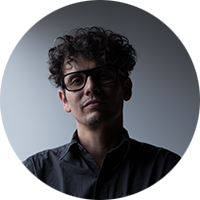
Pablo Kobayashi
ACADIA 2018 Site Chair
Adjunct Professor, Department of Architecture, Urbanism and Civil Engineering, Universidad Iberoamericana
Founding Partner, Protocolos (link)
Bio:
Pablo Kobayashi holds a Master on Emergent Technologies and Design from the Architectural Association School of Architecture and a B.S.I. from the Universidad Intercontinental. He is the director of the Unidad de Protocolos (Protocols Unit), an advanced design practice and consultancy office based in Mexico City with a development and fabrication subsidiary specialized in bespoke concrete elements production called UP. He has focused his practice and research on the implications of the use of digital technologies in different stages of the design process, from conceptualisation to fabrication, emphasising the analysis of the theoretical and philosophical consequences of this new paradigm and its interrelation with the matter. This has been driven by the constant will to explore and apply the principles of emergence to both the structure of thought, design and research processes. The dynamics of his practice have constantly shifted between an adaptable plug-in office, an external consultancy agency and an experimental art and design studio, enabling collaborations with numerous architects, designers and artists.
He drifted into computational design and as a direct consequence gained knowledge around evolutionary strategies, generative processes and parametric modeling tools, within and without the digital tool. He has consequently grown interested in the notions of analogue programming and material systems. He is also interested in integrating the human body as both machine and part of the code, using intuition as a pre-loaded set of knowledge that drives certain decisions, testing a physical file-to-factory approach in hand-built construction systems.
He is an Associate Professor of Architecture at the Universidad Iberoamericana where he has taught design studio for nearly twelve years. He has focused his teaching practice to the implementation of a methodology driven by research and emergence, without the need of a pre-established set of goals. The studio currently titled ‘Exogenous protocols, endogenous properties’ (#prexpren) focuses on the exploration of the use of flexible fabric as dynamic concrete formwork. In 2010 he tailored the first graduate programme focused on the exploration of digital tools and material properties in Mexico called ‘Generative Digital Processes: emergence, generation and production’, which later evolved into ‘Digital logics and material expressions’. This series included Manuel DeLanda, Katrin Jonas and Jalal el Ali as guest tutors and lecturers.
In 2016 he led the Material Behaviors unit at the AA Visiting School Mexico City. In 2015 he was chosen as Team Leader at the Hello Wood // Project Village festival held yearly in Hungary. He also teaches at the Architecture and Technology Master Programme at the UNAM and has taught at the La Salle Bajío University, and CENTRO. He has been recipient of the Young Creator’s Grant from the National Culture and Arts Fund.
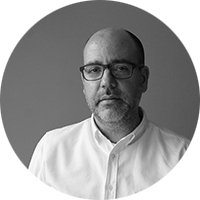
Brian Slocum
ACADIA 2018 Site Co-Chair
Adjunct Professor, Department of Architecture, Urbanism and Civil Engineering, Universidad Iberoamericana
Principal, Diverse Projects (link)
Bio:
Brian Slocum holds a Master of Architecture from the Graduate School of Architecture, Planning and Preservation of Columbia University and a Bachelor of Science in Architecture from Georgia Tech. He is currently an Adjunct Professor in the Department of Architecture, Urbanism and Civil Engineering at the Universidad Iberoamericana in Mexico City, where he teaches a design studio entitled Exogenous Protocols//Endogenous Properties (#prexpren), which focuses on analog material research with thin shell concrete structures and fabric formwork using computational and performative design strategies.
Brian is the co-founder of the design and architecture collaborative Diverse Projects, with offices in the United States and Mexico, which serves as an umbrella for both academic and professional projects in the areas of installation art, infrastructure research, architectural technologies, urban planning and computational design strategies. Slocum was a participant in the group exhibition Landscapes of Quarantine at Storefront for Art and Architecture, where he presented Context/Shift, a prosthetic piece installed on a door panel in the gallery designed by the architect Stephen Holl and the artist Vito Acconci. Additionally, Brian is the recipient of an Individual Research Grant for ad hoc infrastructures from the New York State Council on the Arts. He has also contributed to the journal CLOG as well as to Pamphlet Architecture #23: MOVE Sites of Trauma, by Johanna Saleh Dickson.
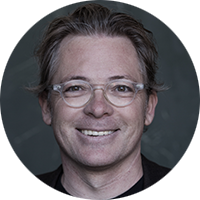
Phillip Anzalone
ACADIA 2018 Technical Chair
Assistant Professor of Architectural Technology, New York City College of Technology
Principal, aa64 (link)
Bio:
Phillip Anzalone is a Professor of Architectural Technology at the New York City College of Technology, where he teaches advanced design studios along with courses in contemporary building envelope, digital fabrication and building structures. Phillip’s research includes the application of science and technology to architectural design problems in areas such as advanced materials, automated manufacturing and construction, active / responsive structural and building envelope systems, computational workflow, cyber-physical systems, augmented reality, building integrated machine learning, and innovative building systems. Phillip leads research and administration for the department’s CNC and Robotic Fabrication and Assembly Laboratory.
Phillip is a practicing Architect and Principal at Atelier Architecture 64 (http://www.aa64.net), an award-winning firm in Brooklyn, New York with diverse expertise in building design and construction. The firm philosophy is focused on bridging innovative material explorations and fabrication processes developed in the workshop with the specific needs of each project through design, environmental performance, architectural detailing and methods of manufacturing. Phillip’s work includes residential, commercial and institutional projects, as well as installations and pavilions, with built projects in North America, Europe and Asia. Atelier Architecture 64’s work has won AIA and SARA awards in research, urban design and architectural projects, and has been exhibited and published extensively.
Phillip is an elected Officer and member of the Board of Directors of ACADIA, the Association for Computer Aided Design in Architecture, and has served as past New York State Regional Director of the American Institute of Architects Young Architects, and is currently a Chair of the Professional Practice committee for the NY AIA Center for Architecture.
Phillip has extensive experience in the areas of funded research, industry collaborative projects, development and integration of computational construction facilities into the curriculum, integration with professional practice, chairing symposium and think-tanks and directing joint multidisciplinary research projects with educational institutions globally. Phillip holds patents on advanced building manufacturing and construction systems, and has been widely published and has lectured extensively on his research projects.
Phillip’ substantial experience organizing conferences and developing and editing related publications include acting as the Technical Co-Chair of the 2006 Synthetic Landscapes ACADIA conference, working with the other Chairs on the logistics of the conference, selection of the papers, and development of the conference proceedings. Other conference related experience include serving as the Chair of the C-BIP International Think Tank symposiums while at Columbia University, organizing seven day-long conferences across the globe, and is currently compiling the work into a multimedia publication. Phillip has participated in numerous other professional and academic conferences over his thirteen-year teaching career as lecturer, moderator and member of the scientific committee.
Phillip holds a Masters of Architecture from Columbia University and B.P.S. Architecture from SUNY Buffalo, with past experience as a building envelope consultant for R. A. Heintges & Associates and as an architectural designer with Greg Lynn Form. Phillip is the former Director of the Building Science and Technology Department at the Graduate School of Architecture, Planning and Preservation, Columbia University, where he was also the founding Director of the Laboratory for Applied Building Science.

Andrew John Wit
ACADIA 2018 Technical Co-Chair
Assistant Professor, Tyler School of Art, Temple University
Co-Founder, WITO (link)
Bio:
Andrew John Wit holds a master’s degree from MIT and is an Assistant Professor at Temple University where he leads research, courses and workshops focused around novel building systems generated through light-weight composites, digital production tools and robotic systems. He is also a Co-Founder of the interdisciplinary research group WITO* Laboratory for Intelligent Environments, resides on the ACADIA board of directors where he is a technical co-chair for the 2018 conference in Mexico City and serves on the editorial board for the International Journal of Architectural Computing.
Wit’s research and projects have been highly disseminated and recognized: UTenSAils (2007 AIA Best of Practice Award), the Advanced Fabrics Exhibition (2007 IFAI Outstanding Achievement Award), along with the widely-published tensegrity structure the Underwood Pavilion, the woven carbon fiber installations entitled rolyPOLY and carbon fiber kites of cloudMAGNET. Wit’s work has been featured at numerous galleries, international conferences and refereed publications.
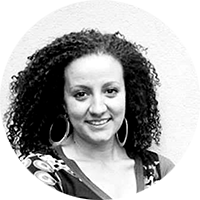
Marcella Del Signore
ACADIA 2018 Technical Co-Chair
Associate Professor, School of Architecture & Design, New York Institute of Technology
Bio:
Marcella Del Signore is an architect and the principal of X-Topia, a design-research practice that explores the intersection of architecture and urbanism with digital practices. She is an Associate Professor of Architecture at the New York Institute of Technology, School of Architecture and Design. She holds a Master in Architecture from La Sapienza University in Rome and a Master of Science in Advanced Architectural Design from Columbia University in New York.
Her work concentrates on the relationship between architecture and urbanism by leveraging emerging technologies to imagine scenarios for the future of environments and cities. In her practice she has been focusing on inter-scalar approaches to design, from small scale interventions, installations and prototypes to buildings to the larger urban scale. This approach has led her to work across scales and protocols from material, morphological, spatial, and performative dimensions to the larger interlacement of spatial and urban systems.
She taught and collaborated with academic institutions in Europe and USA including Tulane University, Barnard College at Columbia University, the Architectural Association, IaaC- Institute of Advanced Architecture of Catalonia, University of Waterloo, LSU School of Architecture, IN/ ARCH- National Italian Institute of Architecture and University of Trento. She currently serves on the Board of Directors of ACADIA.
She has operated nationally and internationally through an extended network of partners, institutions and sponsors that have supported her work, receiving several awards , grants and recognitions.
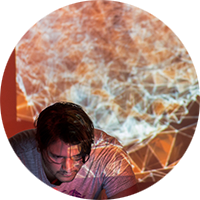
Jorge Ramírez
ACADIA 2018 Workshop Chair
Founder, DNNV Media
Director, ANEMONAL (link)
Bio:
Since 2004, Jorge Ramirez has developed an intermedia body of work traversing architecture, sound, art, science, and design. He holds a degree in architecture and has completed post-graduate studies in generative processes, electroacoustic composition, and computer design.
Jorge has participated exhibiting, giving concerts and lectures with numerous festivals and institutions around the world, including the Museum of Art, Architecture and Technology in Portugal; the International Astronautical Federation; the Fukuoka City Museum; the Polytech Science Museum in Moscow; National Center of the Arts in Mexico City; UdK Berlin; and the Art and Science Museum in Beijing, among others.
In 2012, he founded the multi-platform now known as ANEMONAL to promote, explore, and establish networks through art, technology, and science hybrid projects. ANEMONAL has held events across Europe, Asia, Russia, and Australia. In 2017, Jorge was selected by Ciudad Creativa Digital to curate and produce a series of media art activities in the city of Guadalajara, as part of the city´s application to be recognized as a UNESCO Media Art City, which was approved last year.
Jorge served on the organizing committee of the 2015 and 2016 International Symposium of Mixed and Augmented Reality (ISMAR), as well as the 2017 International Conference on Live Coding (ICLC). This year, he is Workshop Chair for the 2018 ACADIA conference to be held in Mexico City.
Jorge´s work has been featured in national and international media publications such as Expansión, La Jornada, Código DF, Archdaily, Vice, Global Times (CH), Resident Advisor (JP), and Afisha (RUS).
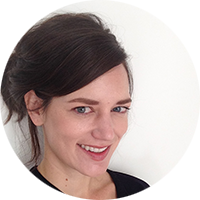
Marcela Delgado
ACADIA 2018 Workshop Co-Chair
Associate Professor, Department of Architecture, Universidad Nacional Autónoma de México
Bio:
Marcela Delgado holds a Master of Architecture from Harvard’s Graduate School of Design and a Bachelor of Arts and Science in Civil Engineering with a concentration in Architectural Design from Stanford University. Marcela is an Associate Professor in the Department of Architecture at the Universidad Nacional Autónoma de México where she is the Academic Coordinator for computer-aided design courses. She is a thesis advisor and teaches electives in parametric design and digital design processes. Marcela has taught previously at Harvard’s Career Discovery Program, Boston Architectural College, Northeastern University, Universidad Iberoamericana and co-taught a travel studio between Sci-Arc and IBERO. Since arriving to Mexico City in 2013, she maintains her independent architecture practice.
Paragraph 2

Pablo Iriarte
ACADIA 2018 Exhibition Chair
Computational Design, New York
Bio:
Pablo Iriarte holds a B.A., Architecture from the Monterrey Institute of Technology. He is an International Associate of the AIA. Past lecturer at the Queens COC, and digital instructor at Universidad Iberoamericana and Monterrey Institute of Technology.
Based in New York City, he defines his architectural practice through a bottom-up design approach: engaging materials, construction systems, and nonlinear geometries explored through computational processes and physical building experimentation.
He pursued studies in generative design processes with Pablo Kobayashi, theories of materials with Manuel De Landa, spatial experimentation with Michael Hensel, scripted design at the University of Houston, robotic fabrication at the Massachusetts Institute of Technology, and architectural technology at the Technische Universitat, Germany. He also collaborated as a computational designer with Marc Fornes / THEVERYMANY and Studio Osman Akan.
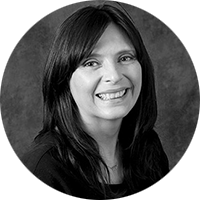
Irma Soler
ACADIA 2018 Exhibition Co-Chair
Assistant Professor, Department of Architecture, Urbanism and Civil Engineering, Universidad Iberoamericana
Bio:
Irma Soler is a Mexican architect. She graduated from the University of Strathclyde where she received her M. Sc. in Computer Aided Building Design. She pursued her architectural studies in Universidad Iberoamericana, Mexico City.
In 2001 she joined Universidad Iberoamericana as a full time professor at the Architecture Department and in 2008 she assumed the CAD Architecture Coordination and formed with the Industrial Design CAD Coordination the ARQDIS computer workshop where rapid prototyping was implemented.
She is also in charge of the Computer Aided Design subjects where she is introducing 3D modelling, BIM, visualisations, use of drones and 3Dprinting. She collaborated on the elaboration of the Mexican BIM Standard in 2016. She is also the Architecture Coordinator in the Academic Group of Inter University Cooperation for Architecture and Engineering, promoted by FUNCO.

José Luis Gutiérrez Brezmes
ACADIA 2018 Special Advisor
Director, Department of Architecture, Universidad Iberoamericana
Bio:
.
.